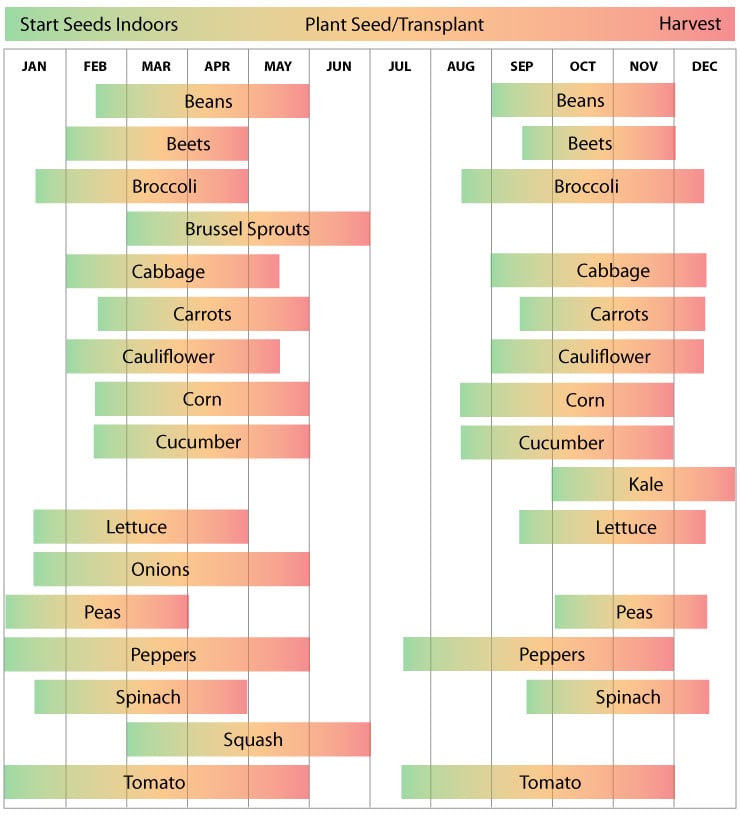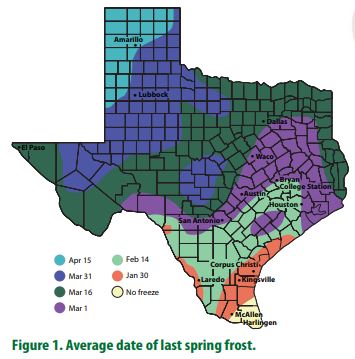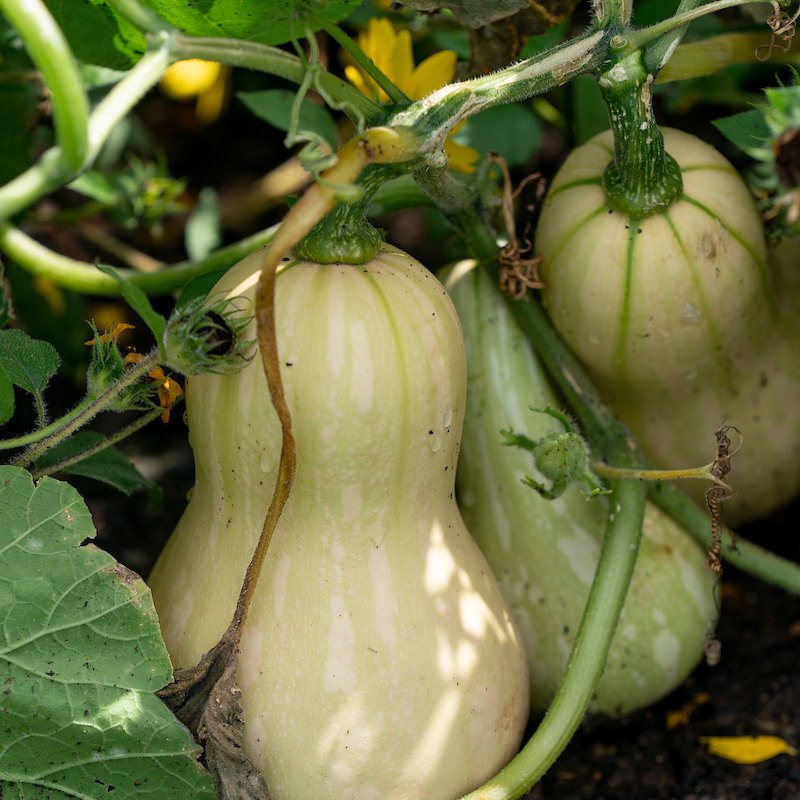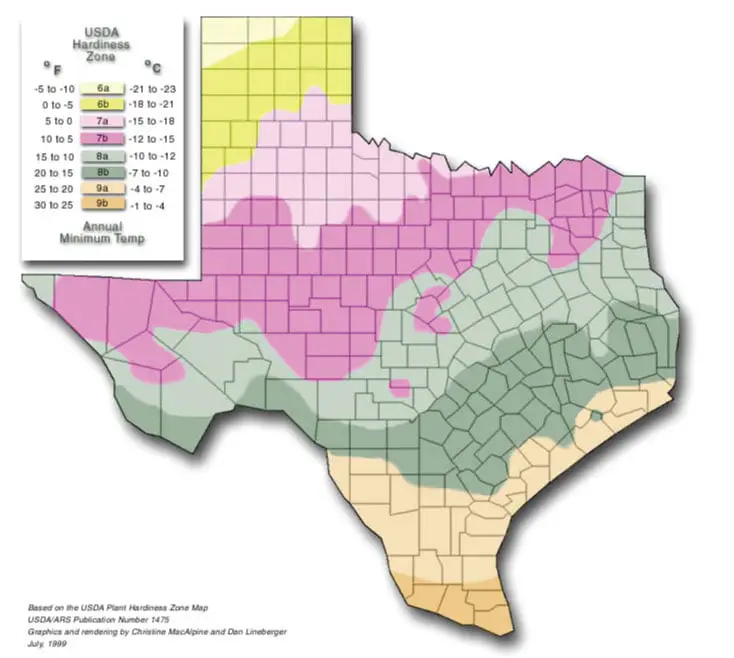Imagine stepping into your backyard, the Texas sun warming your face, and seeing a vibrant tapestry of greens, reds, and yellows. Your garden is alive, buzzing with the promise of fresh, organic produce.
This isn’t a dream; it’s your reality when you embrace the organic gardening season in Texas. But why should you consider going organic, and how can you make the most of the unique Texas climate? In this blog, we’re diving into the heart of organic gardening in Texas, offering you practical tips and expert insights that can transform your gardening experience.
Whether you’re a seasoned green thumb or a curious beginner, the secrets to a bountiful, chemical-free harvest are within your reach. Are you ready to cultivate a garden that’s not only beautiful but also nourishing for you and the planet? Let’s dig in.
JUMP TO TOPIC
Texas Climate And Soil Conditions
Texas offers a diverse climate and varied soil, creating unique challenges and opportunities for organic gardening. Warm temperatures extend the growing season, while understanding soil types ensures healthy plant growth. Adapting gardening practices to local conditions boosts success in cultivating vibrant organic produce.
Organic gardening in Texas offers a unique opportunity to harness the state’s diverse climate and soil conditions. Whether you’re a seasoned gardener or a beginner, understanding these elements can significantly impact the success of your garden. The Texas climate varies from arid deserts to lush pine forests, and knowing how to work with these variations will help your garden thrive.Understanding Texas Climate
Texas boasts a wide range of climates, from the humid subtropical regions in the east to the arid zones in the west. This diversity can be both a challenge and an advantage for gardeners. For those in the eastern parts, prepare for longer growing seasons. These areas often enjoy mild winters, allowing for winter crops. However, be wary of high humidity, which can lead to pest issues. If you’re in the western regions, you might face shorter growing seasons. The dry conditions can be ideal for drought-resistant plants. Consider employing drip irrigation to conserve water and maintain soil moisture.Adapting To Soil Conditions
Texas soil types range from sandy loams to clay. Knowing your soil’s characteristics is crucial for choosing the right plants and amendments. In sandy soils, water drains quickly. Adding organic matter like compost can help retain moisture and nutrients. This is particularly useful in the central regions of Texas. Clay soils, prevalent in some areas, often retain water and can become compacted. To improve aeration, mix in sand and organic material. This will create a more hospitable environment for roots.Personal Insights And Tips
I remember the first time I tried planting tomatoes in my Texas garden. The soil was too clay-heavy, and the plants struggled. Mixing in organic matter and sand made a world of difference, and my next crop flourished. Consider conducting a soil test before planting. This will guide you in choosing suitable amendments and can save you from future frustrations. What if you could transform your garden with simple adjustments to soil and climate understanding? Your gardening success depends not just on your plants, but on how well you adapt to the conditions around you.Choosing The Right Plants
Organic gardening in Texas begins with choosing the right plants. The climate varies across the state, influencing what thrives. Selecting plants that flourish naturally ensures a successful garden. Native species, seasonal vegetables, and climate-suited herbs are excellent choices.
Native Texas Plants
Texas boasts a variety of native plants. These plants adapt well to local soil and weather. Bluebonnets, Texas Sage, and Indian Blanket are popular choices. They require less water and resist local pests. Native plants also support local wildlife.
Seasonal Vegetables And Fruits
Vegetables and fruits thrive in Texas’s growing seasons. Spring is ideal for planting tomatoes, peppers, and squash. In fall, opt for carrots, broccoli, and lettuce. Strawberries and melons do well in warmer months. Choose plants that match the season for best results.
Herbs Suited For Texas Climate
Herbs like rosemary, basil, and thyme flourish in Texas. These herbs tolerate heat and dry conditions. Plant them in well-drained soil for optimum growth. Harvest fresh herbs to enhance your cooking. They add flavor and aroma to any dish.
Preparing Your Garden
Preparing your garden for the organic gardening season in Texas is crucial. This ensures your plants thrive in the warm climate. Begin with basic preparations to create a strong foundation. Focus on soil, composting, and structure to set the stage for success.
Soil Preparation Techniques
Start by testing your soil to understand its needs. Use a kit to check pH levels and nutrients. This helps in choosing the right amendments. Add organic matter like peat moss or manure to enrich the soil. This boosts its water retention and nutrient content.
Tilling is essential to aerate the soil. Use a garden fork or tiller for best results. This process breaks up compacted soil. It allows roots to penetrate and grow easily. Ensure you remove weeds and debris during this process.
Composting For Rich Soil
Composting is key for nutrient-rich soil. Collect kitchen scraps and yard waste for your compost pile. Layer green and brown materials for balance. Green materials include fruit peels and grass clippings. Brown materials are leaves and twigs. Turn the pile regularly to speed up decomposition.
Use compost as a natural fertilizer. Spread it over your garden beds before planting. This enriches the soil with essential nutrients. It also improves soil structure and moisture retention. Composting reduces waste and supports sustainable gardening.
Creating Raised Beds
Raised beds offer many benefits for organic gardening. They improve drainage and soil aeration. This is crucial in areas with heavy clay soil. Build your beds using untreated wood or stone. These materials are safe for organic gardens.
Fill raised beds with a mix of soil and compost. This ensures your plants have access to nutrients. Raised beds warm up faster in spring, extending the growing season. They also help in pest control by elevating plants off the ground.
Plan your layout carefully for best results. Group plants with similar needs together. This simplifies care and maximizes space. Raised beds make gardening more accessible and enjoyable.

Credit: www.ufseeds.com
Watering Strategies
Gardening in Texas demands smart watering strategies. Organic gardens thrive with regular and deep watering, especially in dry seasons. Balance is key to prevent overwatering and ensure healthy plant growth.
Watering your garden effectively can make or break your organic gardening season in Texas. The state’s climate presents unique challenges, with its often blistering summers and sporadic rainfall. However, by adopting smart watering strategies, you can ensure that your plants not only survive but thrive. Let’s delve into some proven techniques to make the most of every drop.Efficient Watering Techniques
Using water wisely is key in maintaining a lush garden. It’s best to water early in the morning or late in the evening to minimize evaporation. Drip irrigation systems are highly effective, delivering water directly to the plant roots where it’s needed most. Consider grouping plants with similar water needs together. This allows you to water efficiently without over-watering some plants while others go thirsty. If you’ve ever noticed a dry patch in your garden, adjusting your watering technique might just be the solution.Rainwater Harvesting
Harvesting rainwater is an excellent way to conserve water and reduce your utility bills. Installing rain barrels can capture runoff from your roof, providing a natural water supply for your garden. This method not only benefits the environment but also gives your plants healthier, chemical-free water. During one summer, my rain barrel saved me during an unexpected drought. It was a relief to have a backup water source when traditional watering methods were limited. Have you considered how rainwater harvesting could buffer your garden against unpredictable weather?Drought-resistant Planting
Choosing drought-resistant plants can significantly reduce your garden’s water needs. Native Texas plants are adapted to the local climate and can often thrive with minimal watering. Options like lavender, yucca, and sage are not only water-efficient but also add beauty and diversity to your garden. To make this strategy work, incorporate a mix of drought-resistant plants with those that require more water. This balance can help maintain your garden’s vibrancy even in dry spells. How might a more drought-resistant garden change your watering routine? Engaging in these watering strategies can transform how you manage your garden’s hydration needs. By being proactive and thoughtful, you can ensure that your Texas garden remains healthy and vibrant throughout the season. What steps will you take to enhance your watering strategy this year?Pest And Disease Control
Organic gardening in Texas presents unique challenges, especially when it comes to pest and disease control. The warm climate is ideal for gardening, but it also attracts a variety of pests and can lead to plant diseases. Understanding how to manage these issues naturally is crucial for a thriving garden. Let’s delve into some effective methods for keeping your plants healthy and pest-free.
Natural Pest Deterrents
Using natural pest deterrents is a sustainable way to protect your garden. Have you tried garlic spray or neem oil? These solutions are not only easy to prepare but also safe for your plants and the environment. Garlic spray acts as a natural repellent, while neem oil disrupts pest life cycles.
Consider planting marigolds as a border around your garden. Their scent deters many common pests. Also, introducing beneficial insects like ladybugs can help control aphid populations. What natural methods have worked for you in the past?
Companion Planting For Pest Control
Companion planting is a strategic way to manage pests organically. By planting certain crops together, you can naturally repel unwanted insects. Basil, when planted alongside tomatoes, can help deter whiteflies. Similarly, nasturtiums can protect cucumbers from aphids.
Think about how you arrange your garden. Mixing different types of plants can confuse pests and reduce infestations. Have you noticed fewer pests when diversifying your plant layout?
Managing Plant Diseases Organically
Preventing plant diseases starts with healthy soil. Regularly adding compost can boost your soil’s resistance to diseases. Crop rotation is another effective strategy. It prevents disease build-up by changing the location of specific plants each season.
If you spot signs of disease, consider using baking soda as a natural fungicide. This simple solution can combat mildew and other fungal issues. Remember, early detection and treatment can save your plants from severe damage.
Organic gardening in Texas requires vigilance and creativity. By adopting natural methods for pest and disease control, you can maintain a healthy and productive garden. What strategies will you try next season?
Seasonal Gardening Tips
Texas offers unique opportunities for organic gardening each season. Plant tomatoes and peppers in spring’s mild weather. Summer is ideal for heat-loving crops like okra and melons. As fall arrives, switch to leafy greens and root vegetables. Seasonal planning ensures a bountiful, sustainable garden.
Organic gardening in Texas is a unique experience due to the state’s diverse climate and long growing season. Whether you’re a beginner or a seasoned gardener, understanding how to adapt your strategies throughout the year can make all the difference. Seasonal gardening tips can help you maximize your harvest, conserve resources, and ensure your garden thrives. Let’s dive into some practical, season-specific advice to keep your Texas organic garden flourishing all year round. ###Spring Planting Guide
Spring in Texas is a time of renewal and growth. Begin by preparing your soil with organic compost to enrich its nutrients. Consider planting cool-season crops like lettuce and spinach early, then transition to warm-season favorites such as tomatoes and peppers. Timing is crucial—plant too early and you risk frost damage; plant too late and you may struggle with the heat. Use a calendar to plan your planting schedule, marking the last frost date in your area. This ensures your seeds and seedlings are ready to thrive as temperatures rise. ###Summer Heat Management
Texas summers are notoriously hot, which can stress your plants. Mulching is your best friend; it helps retain moisture and keeps roots cool. Water early in the morning or late in the evening to minimize evaporation. Drip irrigation systems can be especially effective in delivering water directly to the roots. Consider shade cloth for delicate plants, providing them some respite from the intense midday sun. How do you keep your plants cool and hydrated during peak summer heat? ###Fall Harvesting Tips
Fall is a rewarding time when your hard work comes to fruition. Start by harvesting vegetables like squash, beans, and cucumbers. Keep an eye on the weather forecasts—early frosts can sneak up unexpectedly. Store your bounty properly to enjoy fresh flavors long after the season ends. After harvesting, consider planting cover crops to improve soil health and prevent erosion. Have you tried any new methods for extending your fall harvest? ###Winter Garden Maintenance
Winter in Texas is mild compared to other regions, but it’s the perfect time for garden maintenance. Clean and sharpen your tools to prepare for the next growing season. Remove dead plants and debris to prevent disease and pests. You can also plant hardy greens like kale and collards for a fresh winter harvest. Reflect on your garden’s past year performance. What worked well, and what could be improved? Planning now sets you up for success in the seasons to come. Incorporating these seasonal tips into your gardening routine can transform your organic garden into a thriving ecosystem. What new strategy will you try in your Texas garden this year?Sustainable Practices
Embrace organic gardening in Texas by using sustainable practices. Focus on natural fertilizers and water conservation. This approach helps preserve soil health and supports local biodiversity.
Sustainable gardening practices are at the heart of organic gardening in Texas. As someone who has spent countless hours nurturing a garden under the hot Texas sun, I can tell you that it’s not just about growing plants; it’s about respecting the environment. Sustainable practices help create a thriving ecosystem, conserve resources, and reduce waste. Imagine your garden as a small planet—what choices can you make to protect it? ###Mulching For Soil Health
Mulching is one of the simplest yet most effective sustainable practices you can adopt. It involves covering the soil with materials like straw, leaves, or wood chips. This layer helps retain moisture, reduce weeds, and improve soil health. When I first started mulching, I noticed a dramatic drop in the number of weeds. Plus, my plants seemed happier and healthier. Think of mulching as a protective blanket for your garden, keeping it cozy and fertile. ###Organic Fertilizer Options
Choosing the right fertilizer is crucial for a sustainable garden. Organic fertilizers like compost, manure, and bone meal nourish the soil without harmful chemicals. They improve plant growth and encourage beneficial microorganisms. In my garden, I mix coffee grounds with egg shells for an added nutrient boost. It’s rewarding to see waste transform into a valuable resource for your plants. What organic materials can you recycle into your garden? ###Incorporating Permaculture
Permaculture is about designing your garden to mimic natural ecosystems. It emphasizes working with nature rather than against it. This approach minimizes waste, increases biodiversity, and creates a more resilient garden. Start by planting native species that thrive in Texas’ climate. I’ve seen how native plants attract local wildlife, turning my garden into a bustling hub of activity. How can you create a garden that’s not just sustainable, but also self-sustaining? Embracing these practices can transform your garden into a sustainable paradise. What will you try first?
Credit: agrilifeextension.tamu.edu
Community Resources
Organic gardening in Texas offers many community resources to help enthusiasts. These resources provide support, knowledge, and a sense of community. Engaging with them can enhance your gardening skills and success.
Local Gardening Groups
Local gardening groups unite people with similar interests. They offer a platform to share tips and experiences. Joining these groups helps you learn from seasoned gardeners. You can also exchange seeds and plants within the community.
Texas Agricultural Extension Services
The Texas Agricultural Extension Services are invaluable. They provide research-based advice tailored for Texas climates. Their experts offer insights on soil, pest management, and crop selection. Many resources are free and accessible to everyone.
Workshops And Events
Workshops and events bring learning opportunities to life. They cover topics like composting, soil health, and seasonal planting. Attending these events helps you meet other gardeners and gain practical skills. Check local listings for upcoming workshops near you.

Credit: agrilifeextension.tamu.edu
Frequently Asked Questions
What Month Should You Start A Garden In Texas?
Start a garden in Texas in February or March. These months are ideal for planting cool-season crops. Warm-season plants can be started in April or May. Ensure soil preparation and consider local climate variations for optimal growth. Gardening early maximizes the growing season in Texas.
When To Plant Collard Greens In Texas?
Plant collard greens in Texas during early spring or late summer. Ideal planting months are March and August. Ensure soil temperatures are between 45°F and 85°F. This timing allows for optimal growth and harvest before extreme temperatures. Regular watering and sunlight are essential for healthy greens.
Can You Have A Vegetable Garden Year Round In Texas?
Yes, you can maintain a year-round vegetable garden in Texas. The state’s mild climate supports growing different vegetables each season. Focus on cool-season crops like lettuce in winter, and warm-season vegetables like tomatoes in summer. Adjust planting schedules to suit local climate variations for optimal growth.
When To Plant Black-eyed Peas In Texas?
Plant black-eyed peas in Texas from late April to early June. Ensure the soil temperature is above 60°F.
Conclusion
Organic gardening in Texas offers rewarding challenges and joys. The unique climate and soil provide great opportunities to grow fresh produce. Embrace the seasons, from spring planting to autumn harvest. Choose crops that thrive in Texas heat and sunshine. Don’t forget to nurture your soil with compost and organic fertilizers.
Stay attentive to watering needs and pest control. Enjoy the fruits of your labor and share them with loved ones. Gardening is not just a hobby; it’s a journey of growth. Plant, nurture, and watch your garden flourish. Texas gardens are full of life and promise.
Happy gardening!

